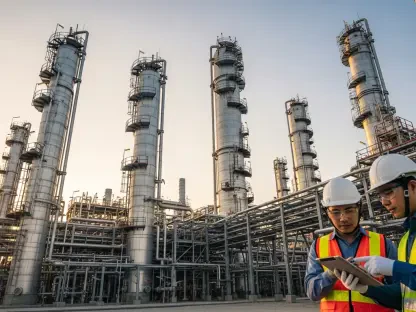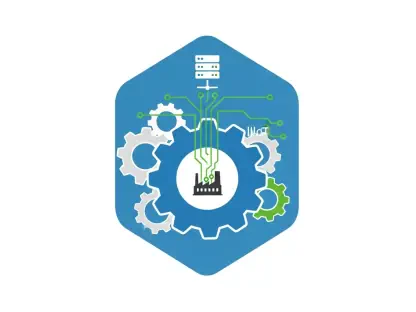Imagine a world where vast, sun-scorched deserts not only produce food but also harness renewable energy, addressing two of humanity’s most pressing challenges simultaneously. In arid regions across the globe, where water scarcity and extreme heat threaten agricultural viability, a groundbreaking approach known as agrivoltaics is emerging as a potential game-changer. This innovative practice combines crop cultivation with solar energy generation on the same land, offering a dual-purpose solution that could transform farming in water-stressed areas. By integrating solar panels with agriculture, this method promises to enhance crop yields, reduce water usage, and provide farmers with an additional income stream from energy production. As climate change intensifies the strain on food security, particularly in semi-arid and arid environments, the need for sustainable solutions has never been more urgent. Agrivoltaics stands at the forefront of this battle, with research and real-world applications showcasing its potential to reshape the future of farming in some of the planet’s harshest climates.
Unlocking Dual Benefits for Agriculture and Energy
The concept of agrivoltaics hinges on a symbiotic relationship between solar panels and crops, creating a microclimate that benefits both. Solar arrays strategically placed above farmland provide shade, reducing the intensity of midday sun and lowering air temperatures around the plants. This shading effect helps mitigate heat stress, a significant barrier to productivity in arid regions, while also increasing humidity and protecting crops from excessive solar radiation. The result is a notable reduction in moisture loss, which is critical in areas where water is scarce. Moreover, this setup counteracts the midday depression in photosynthesis, a phenomenon where plants slow down growth under extreme heat, ultimately leading to improved yields. Research from leading institutions has shown that crops grown under these conditions often thrive better than those exposed to unrelenting sunlight, offering a lifeline to farmers struggling with the impacts of rising global temperatures.
Beyond the agricultural advantages, agrivoltaics introduces a vital economic dimension for farmers in challenging environments. The solar panels installed over crops generate renewable energy, which can be sold to local grids, providing an additional revenue stream that diversifies income sources. This financial boost is particularly significant in regions where farming alone may not be sustainable due to environmental constraints. Furthermore, the shade from panels creates safer working conditions for laborers, who often face extreme heat during peak hours. As global warming continues to push temperatures higher, such protection becomes increasingly valuable. Successful implementations in various parts of the world have demonstrated that this dual-use approach not only supports food production but also aligns with broader goals of energy sustainability, making it a practical solution for communities in North America, the Middle East, and North Africa, where both water and energy demands are pressing concerns.
Addressing Water Scarcity in Vulnerable Regions
In many arid and semi-arid areas, irrigation accounts for the lion’s share of water usage, placing immense pressure on already limited resources. Agrivoltaics offers a compelling way to alleviate this strain by reducing the evaporation rate of water from the soil, thanks to the shade provided by solar panels. This means crops require less frequent watering, easing the burden on irrigation systems and conserving a precious resource. Regions such as the Middle East and parts of the Americas, often described as among the most vulnerable due to their dense populations and reliance on irrigated agriculture, stand to gain significantly from this technology. By integrating energy production with farming, these areas can secure food supplies without the need for additional land, addressing a critical challenge in the face of growing populations and diminishing water availability.
The scalability of agrivoltaics further underscores its potential to transform agriculture in water-limited regions. The U.S. Department of Energy projects that meeting future energy needs will require millions of acres for utility-scale solar by 2050, and using existing farmland for this purpose avoids the environmental cost of clearing new areas. Pilot projects in states like Colorado and Virginia have already shown promising results, with higher yields for crops and even grass for grazing animals under solar arrays. These examples highlight how the practice can be adapted to diverse agricultural systems, from traditional crop farming to livestock integration. As adoption spreads, the technology could play a pivotal role in reducing water scarcity while supporting the livelihoods of farmers who often bear the brunt of climate challenges, paving the way for more resilient food systems in some of the world’s most at-risk areas.
Future Prospects and Global Adoption Trends
Looking ahead, the global trajectory of agrivoltaics suggests a significant shift toward sustainable agricultural practices. Industry projections indicate that the market for this technology could reach billions of dollars by 2033, potentially accounting for a substantial portion of solar capacity worldwide. This economic growth reflects a broader consensus on the value of dual-purpose solutions in addressing interconnected issues of food, energy, and water security. Successful case studies from Africa and parts of the U.S. have demonstrated tangible benefits, including increased production of crops and honey, showcasing the versatility of agrivoltaics across different climates and farming practices. As more countries recognize the need to adapt to changing environmental conditions, the adoption of this approach is likely to accelerate, driven by both necessity and the promise of economic returns.
Reflecting on past efforts, the journey of agrivoltaics reveals a clear path for mitigating the harsh impacts of climate change on agriculture. The research and early implementations have established a foundation for enhancing crop resilience and supporting farmers economically in arid regions. Moving forward, the focus has shifted to expanding access to this technology, ensuring that vulnerable communities can integrate it into their practices. Policymakers and industry leaders are encouraged to invest in infrastructure and training to facilitate wider adoption. Additionally, fostering international collaboration to share best practices has become essential for tailoring solutions to local needs. The legacy of these initial steps highlights the importance of innovation in securing a sustainable future for farming, urging stakeholders to continue exploring ways to balance energy demands with agricultural productivity in the world’s most challenging environments.









